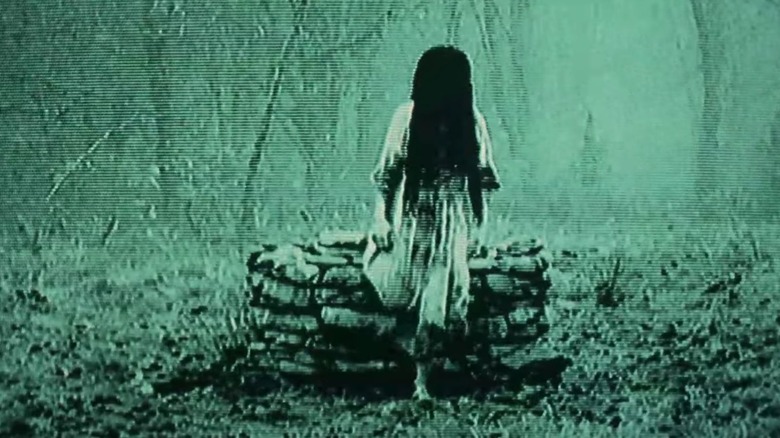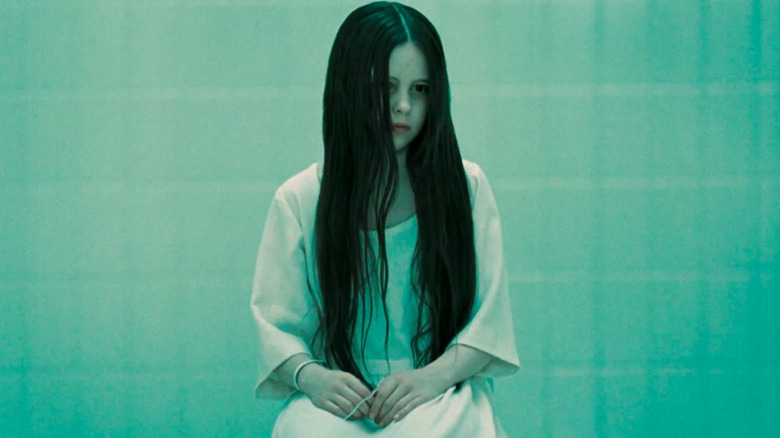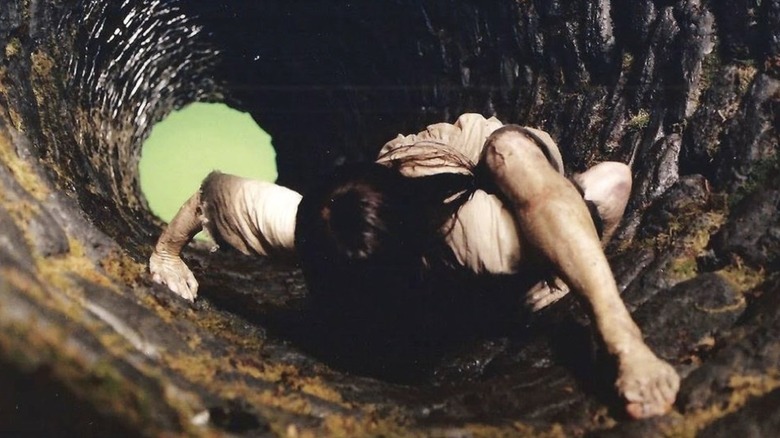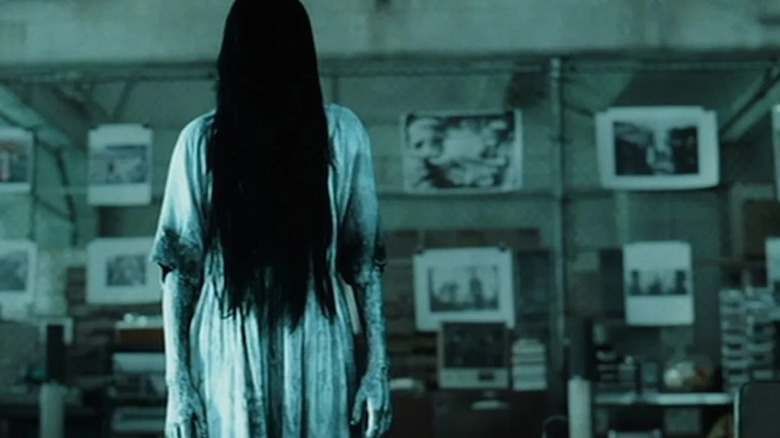The Himeji Castle Horror Story That Inspired The Ring And Ringu
The "Ring" franchise is one of the broader and more sprawling in current horror. The timeline on "The Ring" goes back to 1991 with the publication of Koji Suzuki's novel, called merely "Ring," which spawned two sequels called "Spiral" (1995) and "Loop" (1998). "Ring" was first adapted to film in 1995 with the TV movie "Ring: Kanzenban," and then adapted to manga and to audio drama in 1996. A famous film adaptation came out in 1998 which spawned a Korean remake, "The Ring Virus," and a TV series "The Ring: The Final Chapter," both in 1999. In 2002, director Gore Verbinski made an American, English-language adaptation starring Naomi Watts that proved to be a big hit in the United States, which, in itself spawned two sequels in 2005 and in 2017. Then there are the adaptations of "Spiral" and of "Loop."
All told, there are 15 "Ring" movies and TV shows, with a 16th due in 2022.
The premise for "The Ring" is a fun one for anyone who was raised on VCRs: A haunted VHS cassette, when watched, curses its viewer. After completing the video — a strange, two-minute experimental video; the kind Tarsem might direct — the viewer receives a whispery telephone call stating "seven days." After a week, they die unexpectedly. The protagonist of "The Ring" investigates the casette's source and finds that it was "made" via psychic photography by a young girl named Samara who was killed long ago by being abandoned in a well. She survived seven days in the well. The titular ring was the ring of light she could see looking up from the bottom of the covered well.
Prior to the VHS element, however, the "Ring" story started much earlier. As early as 1655, drawn from several Japanese legends.
Okiku's Well
One of the more notable tourist attractions in Himeji Japan is the beautiful Himeji Castle. According to tourism websites, the site of the castle was first occupied by a fort, constructed by the famed samurai Akamatsu Norimura way back in 1333. It was replaced by a larger castle in 1581 by Toyotomi Hideyoshi, and then renovated again in 1600 by Ikeda Terumasa after the castle was gifted to him by the Shogunate at the time. It was expanded throughout the 1610s, and remained more or less unchanged until the modern day (it was restored and renovated again in 2015).
Just outside of Himeji Castle, sporting a wicked looking metal fence and blocked by a grate, is a well referred to as Okiku's Well.
There are various legends of Okiku's Well, relayed many places online. Every version tells of a servant in Himeji Castle who served in the mid-1650s. Okiku was a maid who, according the version of the legend told in Harima Province, was used as a tool of assassination by a samurai, Tessan Aoyama, who poisoned the food Okiku was bringing her master. When the poisoning was discovered, Okiku was the one who was punished and was executed. Okiku returned as a ghost to haunt Aoyama and — in a Macbeth-like twist — was goaded into taking his own life.
The Edo version
According to the legend as it came out of Edo (as related in the book "Yurei Attack!: The Japanese Ghost Survival Guide" by Hiroko Yoda and Matt Alt), Aoyama was the master, and a cruel and spiteful one at that. When Okiku broke a priceless plate of his — one of a set of ten — he cut off her middle finger as punishment and imprisons her in a dungeon. Okiku escaped the dungeon, but ended up falling down (or was perhaps thrown down) a well. Her ghost would emerge occasionally thereafter, and Aoyama required an exorcist to get rid of her. The ghost eventually disappeared, but Aoyama's children were all born missing their middle fingers.
There are additional versions of the legend as well, as the one where Aoyama's wife broke the above-mentioned plate and blamed it on Okiku. In yet another, Okiku overheard Aoyama plotting to kill the local prelate, revealed his plot to her lover, another loyal lord, and was killed by Aoyama in retaliation.
In all versions of the myth, Okiku, a woman of low station, ends up dead at the bottom of a well, usually due to the machinations of those in power. In most versions of the story, Okiku emerges as a ghost, sometimes weeping, and sometimes counting to nine (or 10) to represent the set of plates she broke or was accused of breaking. In all cases, she is a malevolent spirit of class vengeance.
The various plays
The legend of Okiku was popularized in a Bunranku play called "Bancho Sarayashiki," first performed in 1741. In the first version of the play, Aoyama who was crazy in love with Okiku. He hid one of 10 ten plates, blaming her for the loss, saying he wouldn't punish her if she married him. When she refused ... into the well. In a later version of the play — and this seems to be the version most closely resembling "The Ring" — Okiku is horrendously tortured by a wicked samurai named Tetsuzan who also blamed her for the loss of a missing plate. In that version, Okiku was bodily lowered into a well, hoisted out, beaten, and lowered in again. The end of the play featured Okiku climbing out of the well to approach Tetsuzan, presumably to enact her vengeance from beyond the grave. The legend has been depicted in various artworks throughout Japanese history, usually depicting Okiku bound in rope and dangling above a well.
There were Kabuki versions of the legend as well, with the "modern" version scripted in 1916 by Kido Okamoto. In that version — as is the wont of modern writing — the characters are examined more closely and their psychology is examined.
One might notice that the art of Okiku — long black hair and a white gown — is visually similar to Samara in "The Ring." While Koji Suzuki's original novel is technology-based — the haunted VHS cassette and psychic photography seem influenced by "The X-Files" more than ancient legends — the author was clearly drawing from a 700-year-old ghost story when he placed his wronged young woman at the bottom of a well.
Seven days. Nine plates. Eternal vengeance.



